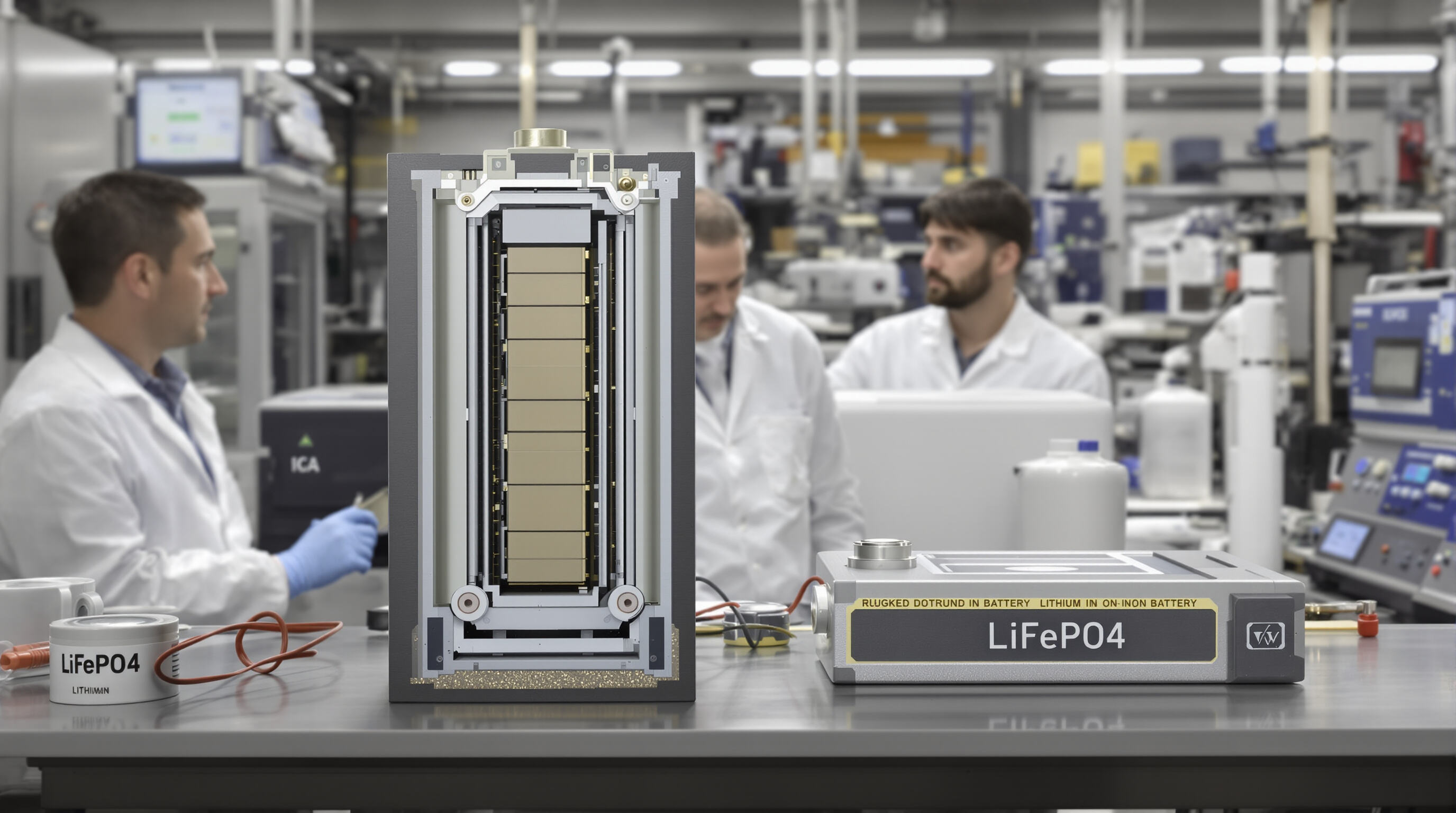Kuna taastuvenergia kasutamist on ülemaailmselt järjest enam kasutuses, on teie energiasalvestuse süsteemi eluea mõistmine olnud tähtsam kui kunagi varem. Koduomanikud ja ettevõtted toetuvad järjest rohkem Powerwall akud taastuvenergia tõhusaks salvestamiseks, elektriarvete vähendamiseks ja energiakindluse säilitamiseks võrguautode ajal. Ettevõttes EITAI pakume meie kõrgeima taseme Energiasäienduspatareid lahendusi, mis sobivad hõlpsasti kokku Hübriidinverteerijad ja Võrguvabad muundurid . Selles artiklis käsitletakse, kui kaua 280Ah taastuvenergia Powerwall aku kestab, tegureid, mis mõjutavad selle toimimist, ja praktilisi nõuandeid selle eluea ja tõhususe maksimeerimiseks.
280Ah Powerwall aku on kõrge mahutavusega energiasalvestusseade, mis on disainitud päikesepaneelidest, tuulikute või muudest taastuvenergiaallikatest toodetud elektri salvestamiseks. "Ah" (amper-tund) näitab põhimõtteliselt, kui palju energiat aku suudab hoida. Mida kõrgem on Ah-tase, seda kauem saab aku voolu andma enne kui see tuleb uuesti laadida. Kodukasutajatele saab 280Ah aku abil tööle panna olulised majapidamisseadmed, valgustuse ja elektriseadmed mitme tunni jooksul öösel või elektrikatkestuste ajal. Ärikasutuses saab see tagada varajõuvaru väikeste kontorite, kaupluste või muude kriitiliste toimingute jaoks.
Tõsi on see, et Powerwall'i aku eluea määravad tegelikult mitmesugused tegurid. Nende hulka kuuluvad laadimise sügavus (DoD), ümbritsev temperatuur, tsüklite sagedus ning seda, kui hästi aku tööd juhivad vaheldusvoolu invertersid ja süsteemi juhtimisseadmed. Kui aku iga päev täielikult tühjaks teha, võib see vähendada selle kogu tsükli elu, samas kui mõõdukas ja hästi juhitud kasutus võib seda märgatavalt pikendada. EiTai toodab energiasalvestusakusid, mis on disainitud nii, et need oleksid ka tihe tsükli korral usaldusväärsed ja kaua kestvad, mistõttu sobivad need nii võrku ühendatud kui ka võrgust lahti olevate paigaldiste jaoks.

Hübriidinverteerijad on need, kes aitavad päikesepaneelide ja salvestusseadmega süsteemil sujuvalt ja tõhusalt töötada. Sellised inverters reguleerivad elektri voolu päikesepaneelidest, aku ja võrgu vahel, tagades energiasäästu. Ülelaadimise ja sügava tühjenemise ennetamise kaudu Hübriidinverteerijad aitavad kaitsta aku rakke, pikendades 280Ah Powerwall aku tööelu.
Samuti suurendavad hübriidinvertorid koguenergia efektiivsust, kasutades kõigepealt päikeseelektri, salvestades üleliigse elektriivari aku ja vähendades võrgust sõltuvust tippude ajal. Paljud tänapäevased hübriidinvertorid sisaldavad ka nutikat energiahaldusprogrammi, mis võimaldab kasutajatel jälgida tarbimismustreid, optimeerida laadimisajakavasid ja vältida akule liigset koormust. Lisaks võimaldavad hübriidinvertorid laiendatava aku mahtuvuse , mis tähendab, et saate tulevikus oma salvestusmahtu suurendada, ilma et peaks kogu süsteemi asendama, andes paindlikkust kasvavate energiavajaduste jaoks.
Kodudele, ettevõtetele või kõrvalolevatele kohtadele, mis toimivad sõltumatult peamisest elektrivõrgust, Võrguvabad muundurid on hädavajalikud. Need invertorid teisendavad Powerwall aku salvestatud DC energiat AC elektriks, mis on sobiv kodumasinatele, valgustusele ja äriseadmetele. Autonoomsed invertorid tagavad, et elektrit oleks saadaval stabiilne ja usaldusväärne võimsuse väljund , kaitstes akut ebaregulaarsete koormuste, pinge kõikumiste ja ootamatute ülekandete eest, mis võivad süsteemi kahjustada.
Kõrgekvaliteedilise Off Grid Inverteri integreerimisel saate kasutada 280Ah Powerwall akut toetama võrgust sõltumatut elamist, hädavarustusvoolu või energiasäästlikkust piirkondades, kus võrgulepääsus on ebatõeline. See muudab taastuvenergia süsteemid mitmekesisemaks ja usaldusväärsemaks, andes koduomanikele ja ettevõtjatele rahulolu.
The 280Ah liitiumioonakut Powerwall aku eluiga jääb tavaliselt 8 kuni 15 aastasse, sõltuvalt kasutusmustritest, keskkonnaoludest ja süsteemi komponentide kvaliteedist. Akuvõime mõõdetakse tsüklites, millest igaüks tähendab täielikku laadimist ja tühjenemist. Tüüpilise kodusüsteemi puhul võib Powerwall aku läbida ühe täie tsükli päevas, mis tähendab ligikaudu 3000–5000 tsüklit selle eluea jooksul.
Mitmesugused tegurid mõjutavad aku eluiga:
Kombineerides kõrgekvaliteedilise Energiasäienduspatareid koos Hübriidinverteerijad ja Võrguvabad muundurid , saavad kasutajad maksimeerida tsüklite arvu ja pikendada oma süsteemi tööiga.
Veenduge, et teie 280Ah taastuvenergia Powerwall toimiks aastate jooksul optimaalselt, järgides järgmisi parimaid tavasid:
Nende strateegiate järgimisel saab Powerwall aku säilitada kõrge tõhususe, vähendada energiakadu ning tagada usaldusväärselt varuvoolu vajadusel.
280Ah taastuvenergia Powerwall aku eluiga sõltub keskkonnaoludest, kasutusharjumustest ja süsteemihaldusest. Koos õige montaž , nutikate invertorite ja täpse jälgimisega võib teie aku tagada usaldusväärse energiasalvestuse peaaegu kümneks aastaks või kauemaks .
EiTai spetsialiseerub täiustatud energiasalvestusakulahendustele, mis töötavad sujuvalt hübriidinvertorite ja võrgust lahtiühendatud invertoritega, võimaldades tõhusat ja jätkusuutlikku päikesenergia kasutamist. Kas te soovite vähendada elektriarveid, saavutada energiasõltumatust või toetada kriitilisi koormusi võrgu katkestel, kvaliteetse Powerwall aku omandamine tagab, et teie taastuvenergia süsteem annab pikemas perspektiivis maksimaalse väärtuse.
Süsteemi mõistmine, õigete komponentide valik ja tarkade kasutuspraktikate rakendamine võimaldavad teil nautida taastuvenergia salvestamise täisi eelkäsi, samas investeeringu kaitsmiseks. EiTai ekspertiabi abil muutub teie 280Ah Powerwall aku mitte ainult salvestuslahenduseks, vaid usaldusväärseks partneriks, keda saavutada jätkusuutliku energiasäästu eesmärgid.